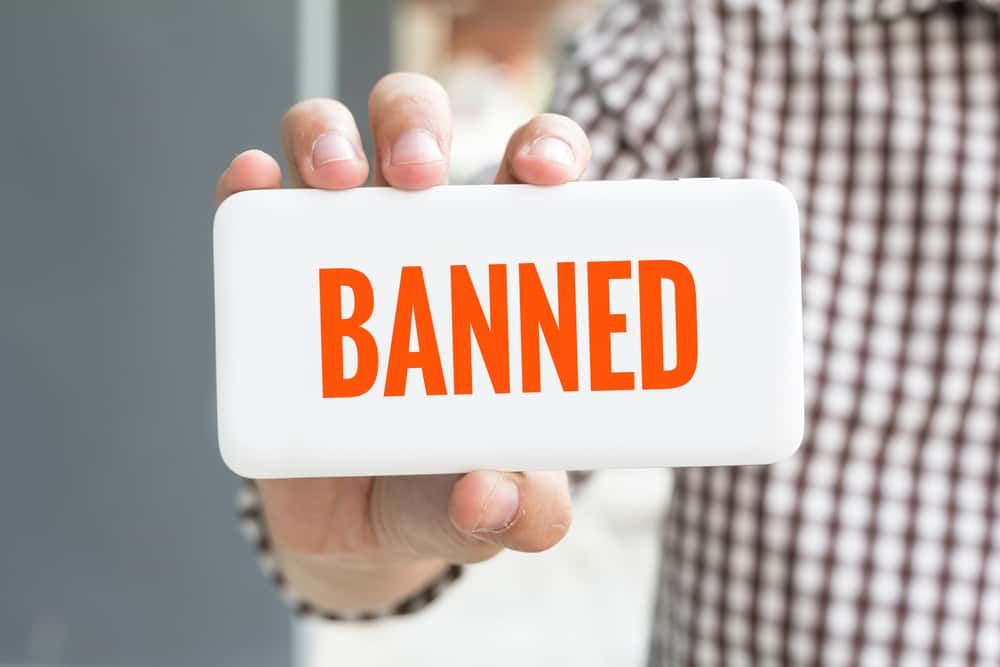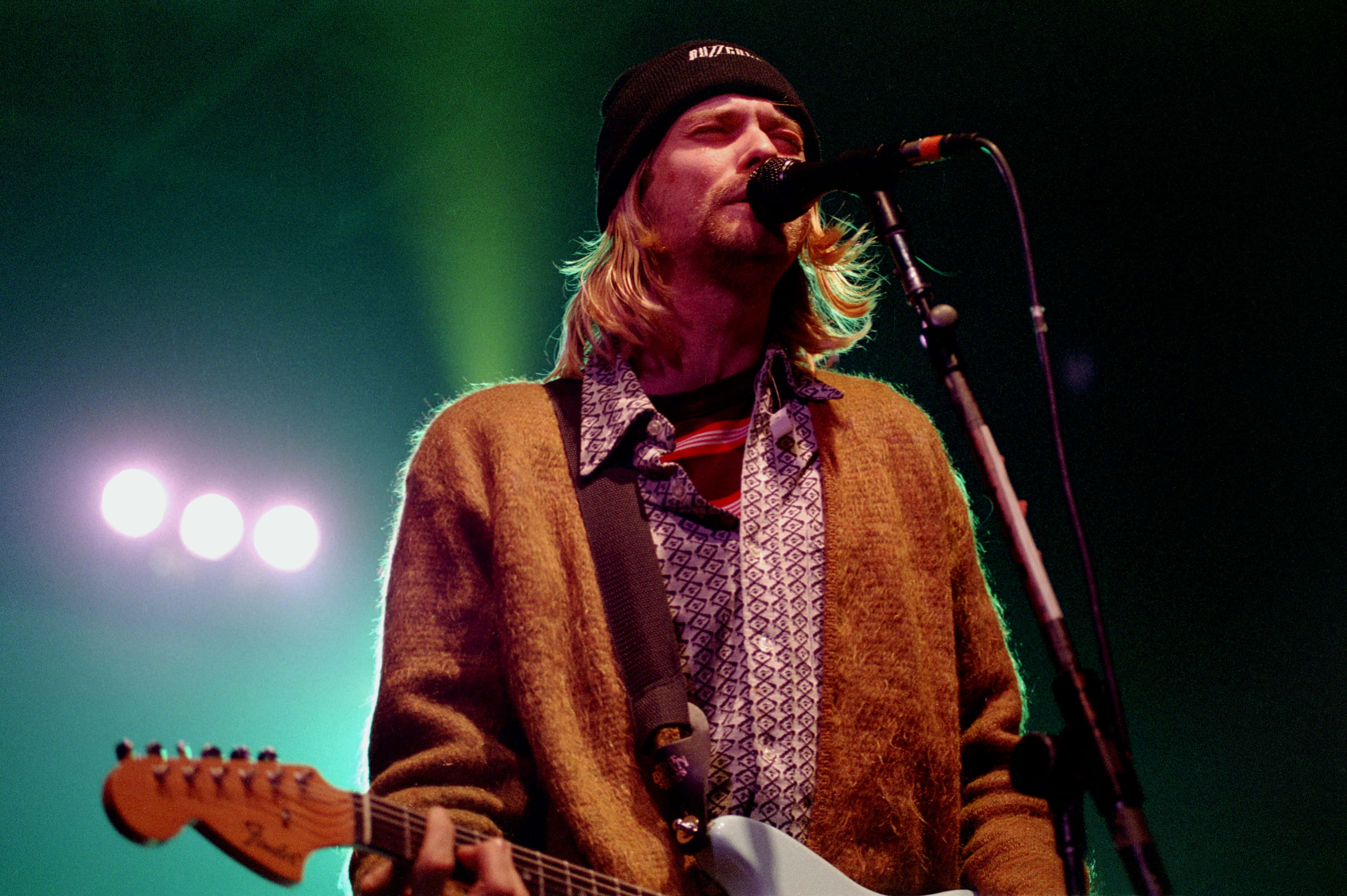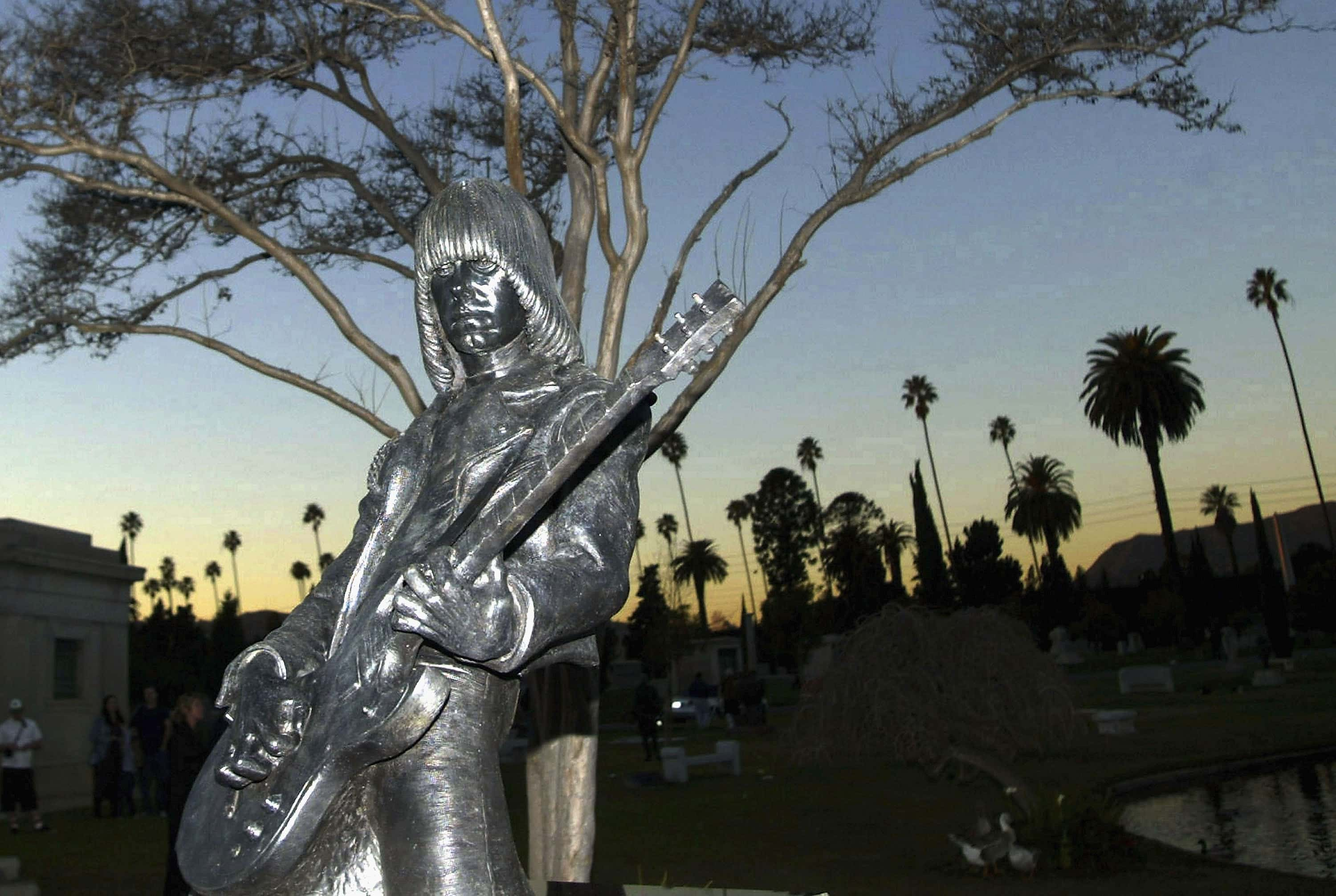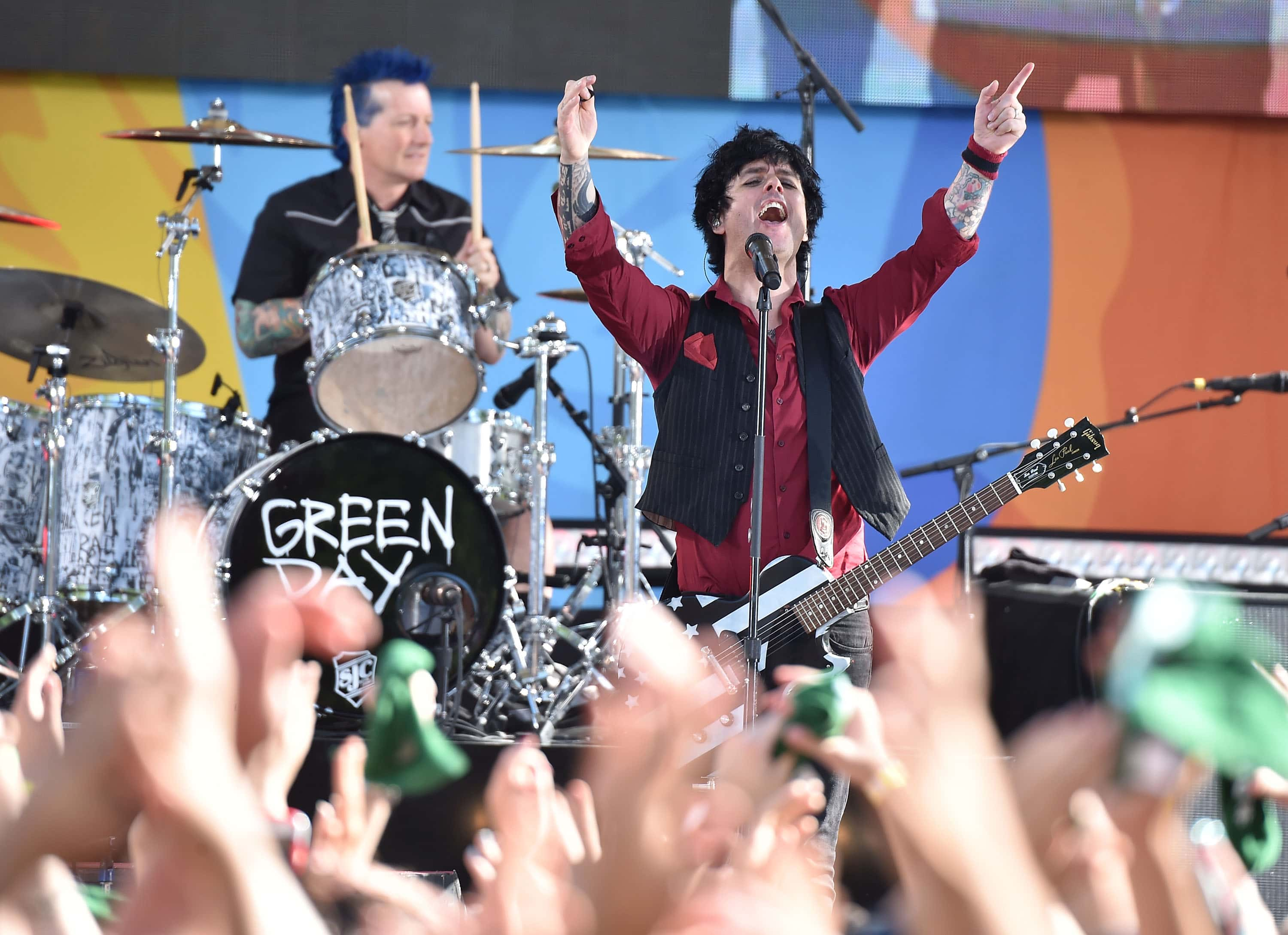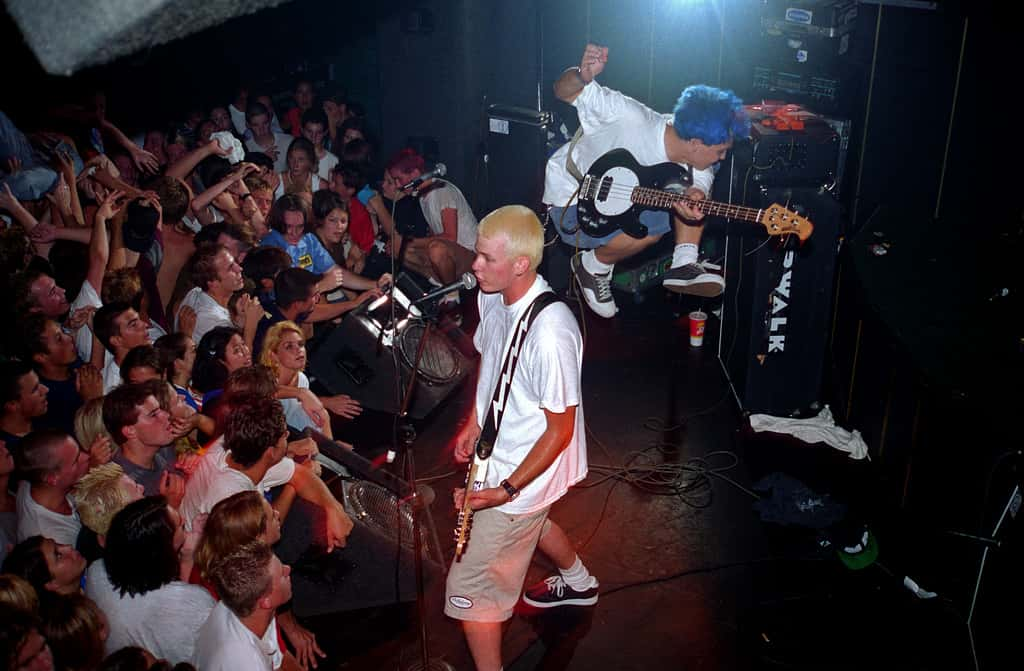Does “punk rock” require an introduction? As one of the most famous music and fashion movements in the 20th century, punk was arguably the subculture for social misfits around the world. In truth, however, there was never one way to be punk. From the political punks to the punks who were just in it for the fashion, it seems like every scenester danced to their own beat. Here are 42 rocking facts about the history of punk music.
42. The Battle at Home
The term punk rock itself comes straight out of your mom’s garage. In the 1960s, homemade bands with limited formal background began to emerge—hence the term “garage” band. What acts such as the Sonics and the Stooges lacked in fancy training, they made up for in “raw power”—excuse the pun—and rowdy concerts.

41. Blame the Artist
Led by the late Lou Reed, The Velvet Underground was a band to whom punk rock owes a lot of its aesthetic. Managed by legendary artist Andy Warhol, they almost had no choice but to be so glamorously unglamorous.
40. A Poor Time With Free Time
A crummy English economy in the 1970s gave birth to punk rock across the pond. A generation of jobless youth transformed their endless supply of free time (and anger at the system) into the rebellious scene we associate today with English punk.
39. Doesn’t Sell What You Think
Punk fashion as we know it was spearheaded by a scandalous London boutique that fittingly called itself “S.E.X.” Once upon a time, the shop also went by the name “Too Fast to Live, Too Young to Go.” Kind of a mouthful, so we understand why they went short and sweet.
 Wikimedia Commons BrokenSphere
Wikimedia Commons BrokenSphere
38. Guiding Force
Does any band fit more into “punk rock” stereotypes than England’s the S.e.x. Pist*ls? It’s no surprise; the band’s first manager was Malcolm McLaren himself, one half of the S.e.x. boutique owners, who styled the first punk rock fashions.
37. Poke the Bear
Although Malcolm McLaren is most associated with pioneering the punk rock “look,” he did not do it alone. His business partner was Vivienne Westwood, a fashion designer who is still around today. In the 70s, Westwood set out to see if her punk clothes would “put a spoke in the system.”
36. Follow His Follicles
Punk is collaborative, even in the closet. For one, the British punk designer Malcolm McLaren only spearheaded the classic punk rock spiky-haired look by directly lifting it from American punk artist Richard H.
35. Splitting Hairs About It
How did punk rockers achieve those spiky-haired ‘dos which embodied the movement? Well, if you were Television band frontman Richard H., you used lots of Vaseline and talcum powder. Hey, looking this bad is truly dirty work.
34. Bad Boys
Going way back into history, the word “punk” has its roots in Shakespeare. In the common tongue, it had been used as a slang term for “S.e.x. worker,” which was its meaning in plays such as The Merry Wives of Windsor and Measure for Measure. After the 18th century, it took on a decidedly masculine meaning in reference to “a young male hustler, a bandit, a hoodlum, or a ruffian.”

History's most fascinating stories and darkest secrets, delivered to your inbox daily.
33. Time to Get a Job
Bands like the Talking Heads, Television, and The Ramones took the lead when it came to “professionalizing” punk in the US through the 1970s. One critic described this wave of punk as embodying “the ultimate garage band with pretensions.”
32. Pourquoi Punk?
The first non-Anglophone punk rock band is generally accepted to be Stinky Toys, who were an all-female fronted act from Paris, France.
31. Smooth Sailing
The big “Second Wave” of punk took form in 1977, but artists did so at the expense of punk’s initial “edge.” Not that it became soft—one the contrary, this sound was considered more “archaic” and became known as “no wave.”
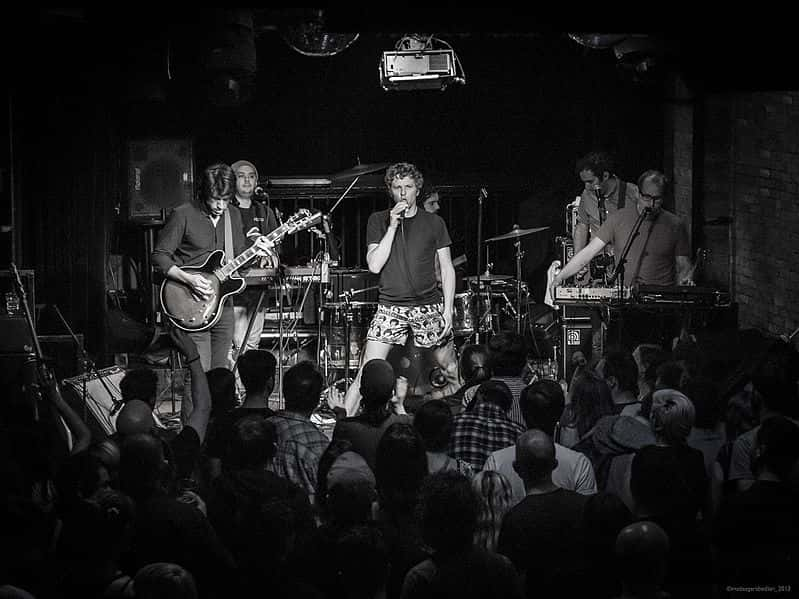 Wikimedia Commons Matias Garabedian
Wikimedia Commons Matias Garabedian
30. Where’s the Swear Jar?
An ugly spat between the S.e.x. Pist*ls and Today show host Bill Grundy came to mark punk rock as “dangerous” to the public. Brought onto replace Queen at the very last minute, the less friendly band was asked by the host to “say something outrageous.” Band member Steve Jones promptly responded with “What a f---ing rotter” before a live audience. This absolutely rocked 1976 sensibilities.
29. No Words for That Word
After a S.e.x. Pist*ls member dropped an F-blast on the Today show, some stores outright refused to stock any more of their records. Likewise, newspapers lambasted the band for their generally poor public manners. Oh, for the age when leaking a swear word on live TV was the worst thing one could do…
28. Her No-So-Majesty
The S.e.x. Pist*ls’ “God Save the Queen” is a landmark punk rock song and a musical middle finger to monarchal obligation. Originally titled “No Future,” the song was outright banned from certain radio stations for its disrespectful message. This didn’t stop it from reaching No. 1 on the UK charts.
27. Love Sick
In 1978, Nancy Spungen was found hurt to the end in her New York City bathroom. The young woman was girlfriend to S.e.x. Pist*ls bassist Sid Vicious, who was immediately suspected of her manslaughter. The couple had made unseemly headlines for their substance use and domestic aggression, for which the papers titled her “Nauseous Nancy.” The scandalous end would put a sour (or “salacious”) spin on the history of punk rock.
26. Bummer Ending
Sid Vicious would never be formally tried for the ending of Nancy Spungen. At the age of just 21, the singer overdosed in his apartment. Ironically, Vicious and his friends had been celebrating his release on bail just the night before.
25. The Queen’s Punk
Punk owes a fashion debt to the Victorians. In the early days, the “dandy suit” and school uniform aesthetics of punk were inspired by 19th-century artists like Oscar Wilde and Beau Brummell. What rebellious, if not traditional “punk,” style icons.
24. Room in Your Shoe Closet For One More?
According to urban legend, iconic punk band The Ramones only wore Chuck Taylor sneakers. However, it is just that: an urban legend. For one, you can easily see them wearing Keds on their first album. In truth, the band were very partial to the Keds brand and only switched to Chuck Taylors once their first-choice went out of production in the U.S.
23. For Beauty or Comfort
The “Chuck Taylor 4Ever” sneakers look wasn’t for every Ramones member. Immediately upon splitting up with band, Marky Ramone went back to wearing Jack Purcell sneakers. As it turns out, sticking to band dress code had given him years of blisters…
22. I Went Punk Rock and All I Got Was This Stupid T-Shirt
Once upon a time, punk fashion was literally intimidating. Some early T-shirt designs by punk rock fashion designers Malcolm McLaren and Vivienne Westwood included glamorization of serial killers and Mickey Mouse engaged in unseemly intimate acts—separate T-shirts, but could you imagine?  Getty Images
Getty Images
21. Sid From the Corner Store
Before he was (in)famous,S.e.x. Pist*ls bassist (and suspected killer) Sid Vicious paid his bills by working at at the landmark S.e.x boutique as a simple clerk. Singer Boy George describe the young Vicious as “a sweet boy in those days, goofy in Hawaiian shirts and fifties pegs.” Fame changes people.
 Wikimedia Commons Chicago Art Department
Wikimedia Commons Chicago Art Department
20. Not Every Fashion Statement Should Be Said
New York and London punk fans would sometimes wear WW2 armbands. Siouxsie Sioux rationalized it as “an anti-mums and dads thing” because they “hated older people always harping on about Adolf H., ‘We showed him,’ and that It was a way of watching someone like that go completely red-faced." Well, maybe they had good reason to be red-faced… 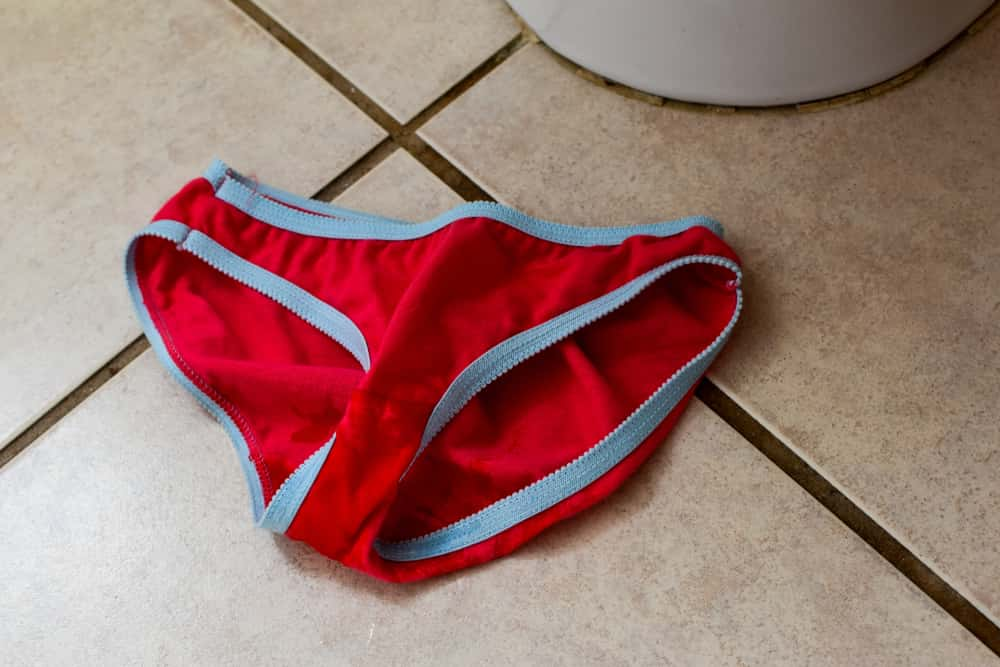 Shutterstock
Shutterstock
19. Nothing More Punk Rock Than Being Eco-Friendly
S.e.x Pist*ls Johnny Rotten got familiar with fame and money…but he still preferred the fashion of trash bags on the street. To quote the artist himself, "That was a perfect, perfect item of clothing. You’d just cut out a hole for your head and your arms and put a belt on, and you looked stunning."
18. On the Heads on My Ancestors
In truth, the “mohawk” predates relevance to music well before punk rock. Jazz musicians in the 1950s, for one, were sporting the look well before the punks.
17. Work Out to These Threads
Punk rock fashion had a very basic purpose to some people: it’s easier to mosh in. By dressing down, you could party it up harder. To quote Henry Rollins, who is arguably the leader of the aggressive punk scene: “You ever see a cheetah obsess over scarves and pocket squares? No. You see a cheetah bolt 70 miles an hour to take down a gazelle and shred it to f---ing pieces. Be the cheetah."
16. Here We Are Now; Entertain Us
Punk’s influence didn’t linger in the 1970s. In fact, more commercial mainstream acts from the 1990s, including bands such as Nirvana, owe their debt to the aesthetics and thematic concerns of “classic” punk.
15. What Is More Punk Rock Than Rabies?
Sid Vicious got his stage name after being viciously bitten by Johnny Rotten’s pet hamster, “Sid.”
14. Punk Is in the Details
Dee Dee Ramone, bassist and songwriter for the Ramones, battled awful demons his whole life. In later years, the band’s success helped finance his recklessness—but as a young man he resorted to desperate measures.* He was in trouble with the law from an early age, including participation in armed attack. He even, it’s been alleged, spent time working as a man of the night. In the words of one music journalist: “Dee Dee was the archetypical [screw]-up. He was a man of the night, a would-be mugger, a drug user and dealer, an accomplice to armed attack—and a genius poet who was headed for an early grave, but was sidetracked by rock ‘n’ roll.”
13. Why Hate When You Can Be Punk?
South Africa watched its punk scene emerge in the 1970s and 80s as a resistance to segregation and apartheid. Bands such as Wild Youth and National Flower were renowned for their musical protest.
12. Punk International
Southeast Asia also has a tradition of punk rock—one more heavily influenced by Western later-year punk acts like Green Day, Rancid, and the Offspring.
11. Make It Pop
These days, most are familiar of “punk” via the “pop punk” subgenre. Bands such as Green Day and Blink-182 combined the aesthetics and sounds of punk with the melodic structures of mainstream popular music. To quote one music critic, “It's punk taken to its most accessible point, a point where it barely reflects its lineage at all, except in the three-chord song structures.”
10. Every Punk Under the Rainbow
“Queercore” is a punk subculture that is pretty self-explanatory. Emerging in the 1980s, bands with LGTBQ members started to cultivate their music around social issues related to gender identity. This led to 21st century festivals such as Queeruption.
9. We Will Not Be Sold
If you’re reading this and feeling that punk seems heavily commercialized, you’re not alone. The Oi! movement was a punk subculture specifically targeted against the “machine” of power. The movement combined skinheads, punks, and generally disaffected working-class youngsters.
 Wikipedia
Wikipedia
8. Post-Dated
In the late 1970s, punk became concerned with a “DIY” sensibility. Bands like Joy Division and Talking Heads fused punk sounds with an avant-garde/disco approach that would be known as “post-punk.”
7. You Haven’t Heard The Last of Me
Punk is generally believed to have been “reborn” in the 1990s thanks to popular acts such as Green Day.
6. Punk Politico
Arguably the most political form of punk is known as “anarcho-punk.” Fueled by S.e.x Pist*ls anthem “Anarchy in the U.K.” (as well as more politically engaged bands like Flux of Pink Indians, Subhumans, Crass, and Conflict), the anarcho-punks are heavily engaged in direct action, from hacking to political dumpster diving.
5. Cloudy with a Chance of Style Inspiration
The Ramones admit that Los Angeles weather was a helpful influence on their style. Unlike the damp New York City or London, L.A. was home to many open-yard thrift and garage sales. The band found it much easier to assemble the DIY punk aesthetic on these sunny trips out.
4. All Dolled Up With No One to Hear Them
While the New York Dolls made a huge splash on punk fashion, thanks to Malcolm McLaren, the band’s influence never really reached beyond New York in the musical sense. To quote one contemporary, “If you wanted to work in the music business, you didn't go round admitting that you saw the New York Dolls. That was like admitting that you had friends who were man to man . It was not popular in the mainstream.”
3. No Such Thing As Bad Press for Punks
In 1989, a wild, hard-partying Billy Idol racked up 149,000 dollars worth of damage in a Thai hotel room. Management attempted to kick him out, but the punk rocker refused...so things escalated insanely, until* the point that the Thai army got involved. They attempted to negotiate, but Idol, in the throes of an absolute binge, was having none of it. In the end, he was physically dragged from the room by representatives of the Thai Army —after they shot him in the chest with a tranquilizer dart.
2. Thanks for the Tip!
Black punk artists played a huge (and underappreciated) role in shaping mainstream punk music. “Afro-punk” bands such as Dea*h never really got the distribution they deserved, but they pioneered many of the early sounds and cultural remixing that would come to form mainstream punk rock.
1. The Feeling is Mutual
On February 9, 1974 Iggy Pop and The Stooges gave one of punk’s most legendary concerts. Days before, in a fiery interview, Iggy threatened to fight a local biker gang. The bikers turned up, looking for blood, and Iggy refused to back down. Throughout the show, he and the band continued to taunt the bikers, who responded by pelting them with eggs, ice, and broken bottles. The best part? The entire show was recorded, and avid fans are able to hear every word of the altercation.
There's a few iconic quotes. For example, early in the show, Iggy can be heard yelling "You [jerks] can throw everything in the world… your girlfriend will still love me.” And later on, while focusing on a single heckler in particular, “Listen, [moron], you heckle me one more time and I’m gonna come down there and kick your behind.”
Sources: 1, 2, 3, 4, 5, 6, 7, 8, 9, 10, 11, 12, 13, 14, 15, 16, 17, 18, 19, 20, 21














